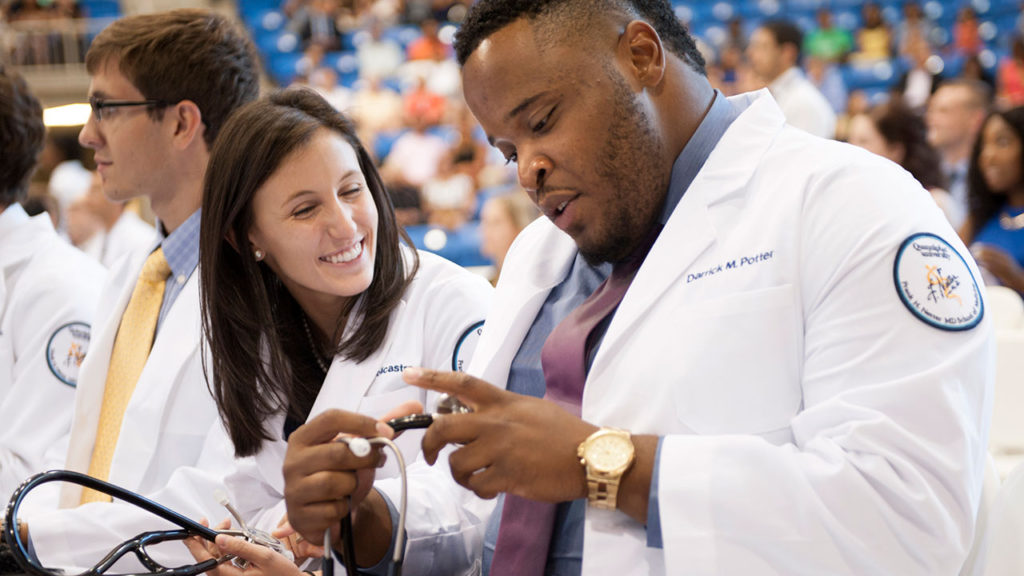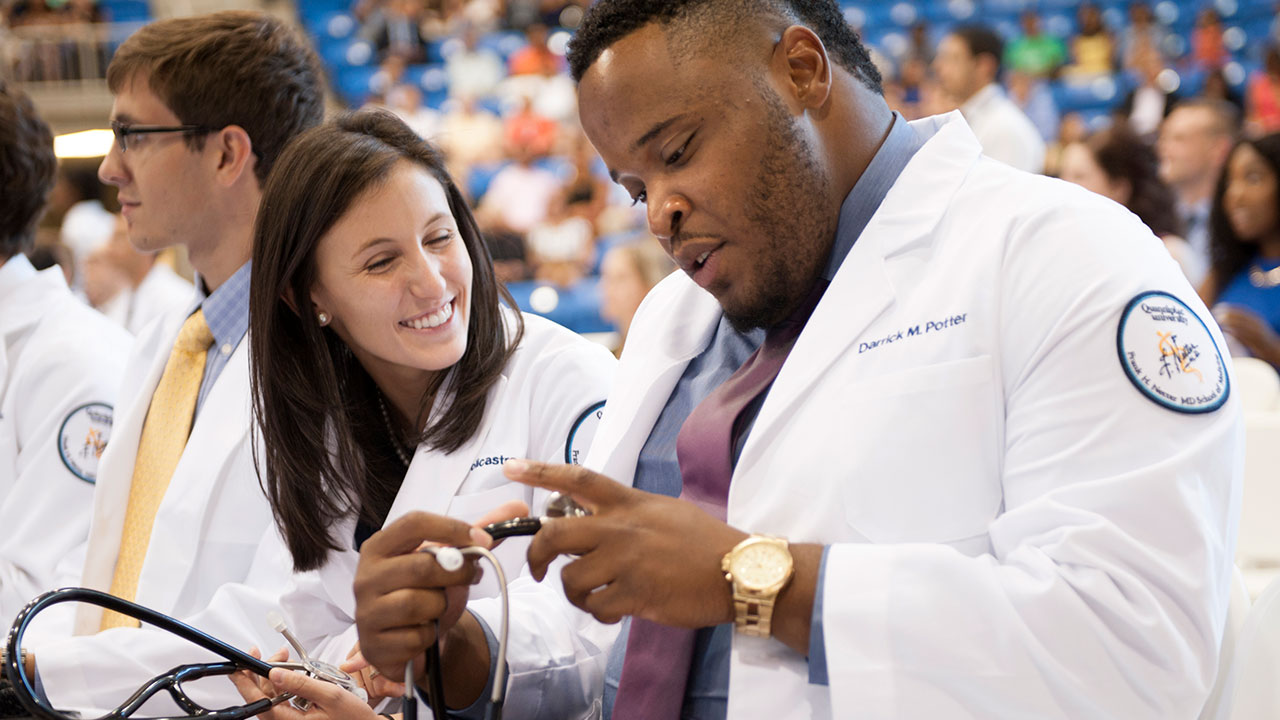
Quinnipiac University first-year medical students, from left, Alexa Policastro, of Saddle River, New Jersey, and Darrick Potter, of New Haven, check out their new stethoscopes during the Frank H. Netter MD School of Medicine’s White Coat Ceremony on Aug. 4 at the TD Bank Sports Center on the university’s York Hill Campus.
Members of the Class of 2020 at Quinnipiac University’s Frank H. Netter MD School of Medicine received their white coats, stethoscopes and sage advice on Thursday, Aug. 4 at the TD Bank Sports Center on the university’s York Hill Campus.
The White Coat Ceremony marked the beginning of the medical school journey for 90 new students.
Mark Thompson, executive vice president and provost, and Dr. Bruce Koeppen, dean of the School of Medicine, provided opening remarks, while Dr. Lisa Coplit, associate dean for faculty development, explained the significance of the White Coat Ceremony.
“The white coat is a symbol of medicine and becoming a doctor,” she said. “Because the white coat continues to be a powerful symbol and a symbol of power, your responsibility is to continually seek to be worthy of the trust of your patients, for whom you wear it. The white coat will, over time, gain its own significance for you, from the life-changing experiences you will encounter as you embark upon this new identity as a physician and healer. In turn, the physician you become will continue to evolve the meaning of the white coat.”
Dr. Rebecca Zucconi, assistant professor of medical science, led the students as they took the Hippocratic Oath. In addition, Dr. Kim Pham, associate dean for student affairs, led the cloaking ceremony for the students.
Dr. Michael R. Grey, chair of medicine at Saint Francis Hospital and Medical Center, delivered the keynote address.
“What is best about our calling as physicians is not the daily marvels we see performed, the technological and interventional wizardry, or the medications that cure or, more often, sustain our patients, but the relationship itself and the bonds of trust with our patients and each other,” Grey said.
The Class of 2020, selected from 7,675 applicants, is comprised of 46 males and 44 females with an average age of 25. Students come from Arizona, California, Connecticut, Colorado, Georgia, Illinois, Maryland, Massachusetts, Michigan, Missouri, Montana, New Jersey, New Mexico, New York, Pennsylvania, Rhode Island, Texas, Utah, Virginia, Washington and Wisconsin. The class also includes students from Canada and Guam.
The School of Medicine specializes in training primary care physicians, who are in short supply because their salaries lag behind those of specialists. According to an April 2016 Association of American Medical Colleges report, the United States will have an estimated shortfall of between 14,900 and 35,600 primary care physicians by 2025.
